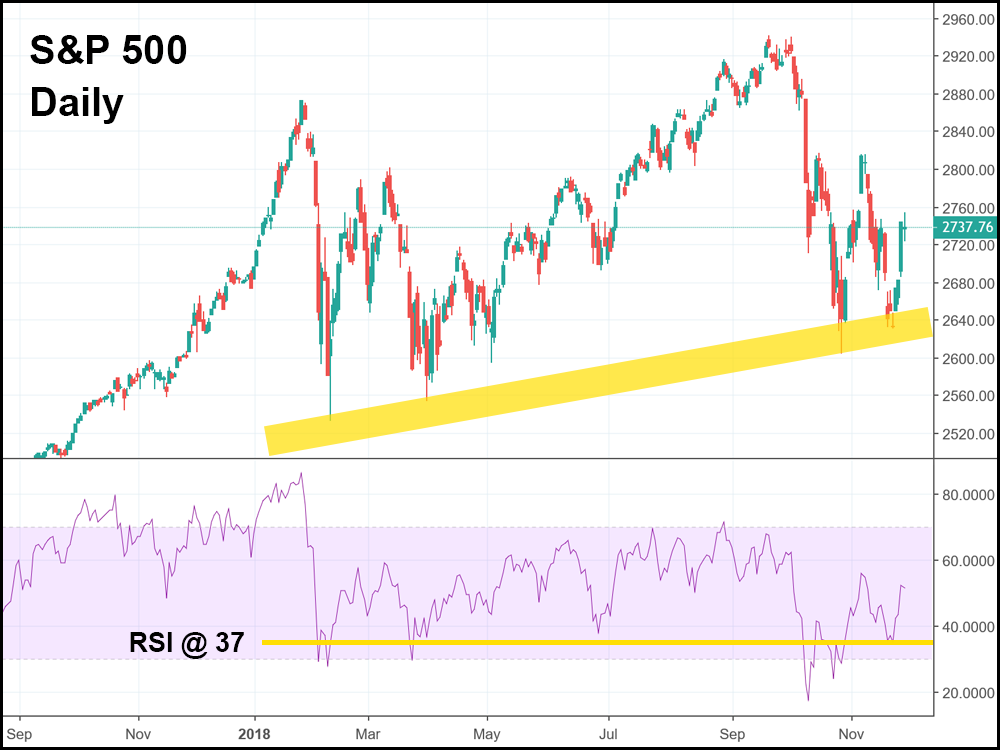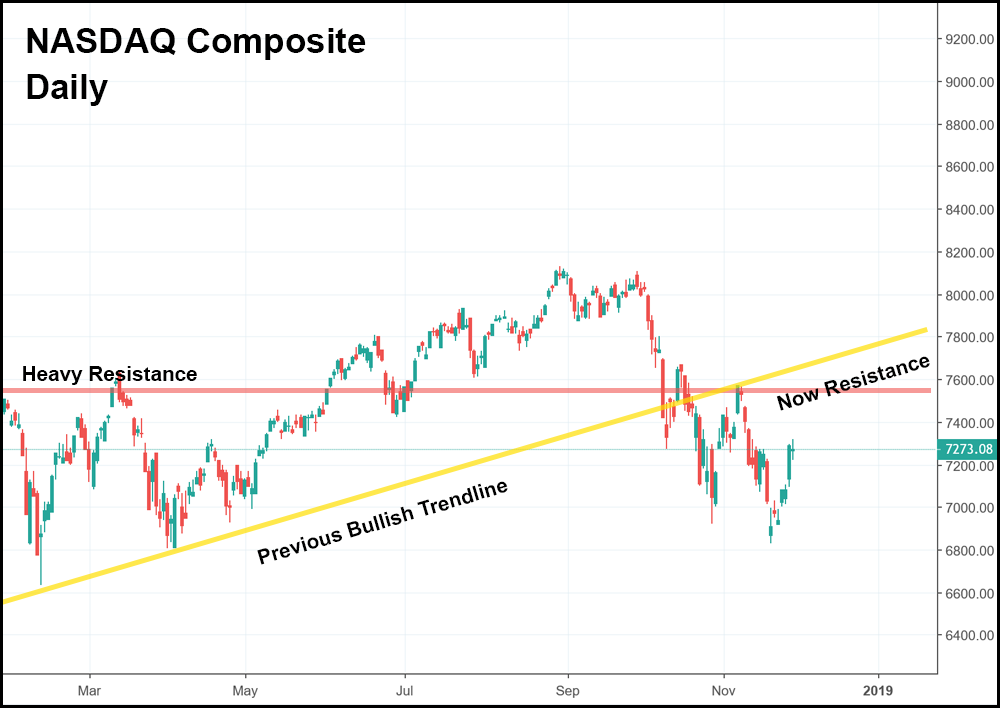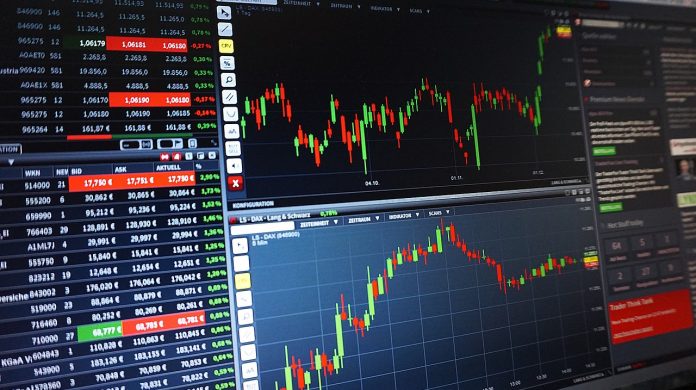What Are the Numbers Telling Us About Wednesday’s Rally?
From a technical standpoint, all U.S. indexes were hovering at the bottom of a strong bullish trendline minted back in 2017. So, a major rally from these lows was already a strong possibility, even without Powell’s comments.
In addition to the support, the Relative Strength Index (RSI) was hovering around 37, which has traditionally acted as a launch point for bull rallies.

The Nasdaq Composite gained more than any other U.S. index, closing just shy of a 3% increase. Should the rally continue however, it could face serious overhead resistance, first near the 7500 mark, and later, at its old bullish support line, which we’d expect it to hit near year’s end if things go well at the G-20 summit.

It’d be an incredibly bullish sign if we pushed over this resistance and back into the upward trending support that had carried the Nasdaq up since 2015. But even with the Fed taking a temporary dovish stance and the possibility of a Trump / Xi trade compromise, there are signs which suggest 2019 will be a struggle for the bulls.
Looking at Possible Scenarios for December and 2019
Short term, two possibilities are likely. The Trump-Xi meeting could push most U.S. indexes close to the old highs minted back in August and September, OR a breakdown in talks could erase most (but probably not all) of the gains made by Chairman Powell’s fed comments.
Longer term, it’s more complicated. And one way to express this is by comparing yesterday’s advancing stocks to the advancing stocks of the 2015-16 correction.
As ZeroHedge reports, the breadth of advancing stocks simply was not strong enough to suggest a real bottom has been marked:
“The number of advancing stocks divided by declining stocks on the NYSE came in at 6.9 today, a respectable number, but not a number that signals the type of buying panic indicative of a major low. Back in 2015-2016 the NYSE advance/decline ratio approached 15 on several occasions, which was the setup for the two-year run ended January 2018.”
In addition to that, the federal reserve is not making a full reversal on its interest rate stance. Not even close.
Employment (one of the Fed’s concerns) is high, but inflation is steadily creeping up, so raising rates makes sense, just maybe not at Powell’s current pace. In other words, higher interest rates are inevitable, and a market correction will almost certainly accompany those rate increases.
With that said, even if the Fed’s new stance only delays a bear market, swing traders may have now been given an opportunity to trade this short-term uptrend. And if a China trade deal works out, it could give investors an excellent price point to exit the markets before the REAL selling gets started.








